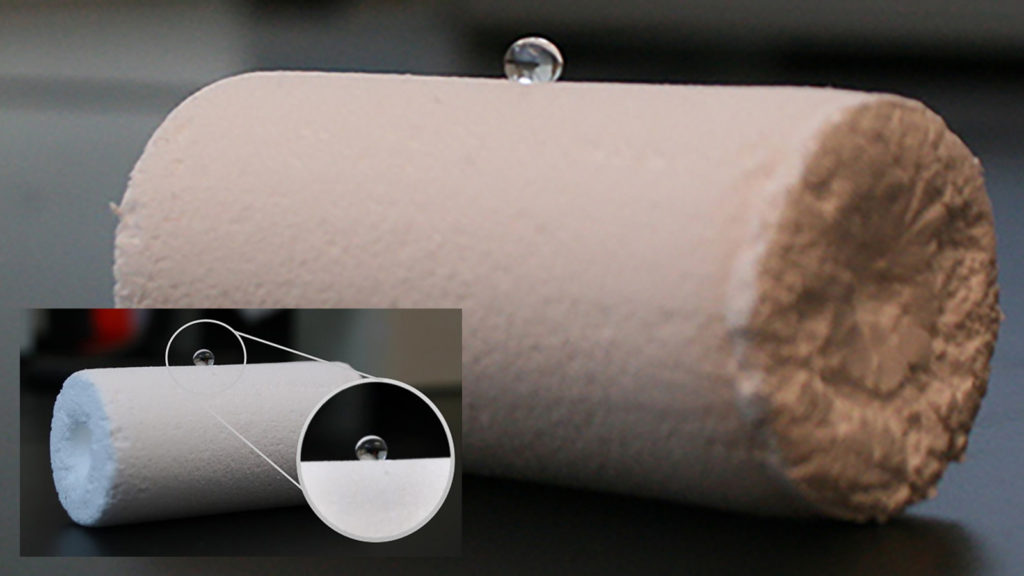While you may not associate such an industrial term with the culinary arts, you may be familiar with the process in the manufacture of corn-based ethanol, antibiotics and lubricants, among an ever-growing range of products.
“EZ Select is a very efficient way of separating product from a very complex environment, because the only thing that adsorbs onto its surface is the product we’re interested in making.” — Phil Laible, Argonne biophysicist
Such processes can be complex and costly, and in many cases, the yields are relatively low — too low to make a product commercially viable. But past successes continue to help grow the industry, driving manufacturers and researchers to work together to find unique solutions to some of biomanufacturing’s bigger problems.
A case in point: researchers from two divisions at the U.S. Department of Energy’s (DOE) Argonne National Laboratory who have joined forces to develop a highly selective adsorbent material called EZ Select to tackle inefficiencies in bioproduct extraction. Combining the laboratory’s expertise in biosciences with its manufacturing know-how, the technology demonstrates the power of partnership.
“The challenge is generating a pure product with relatively low cost and energy,” said Phil Laible, a biophysicist in Argonne’s Biosciences division and a principal investigator on the project. “EZ Select is a very efficient way of separating the product from a very complex environment, because the only thing that adsorbs onto its surface is the product we’re interested in making.”
In bioproduct manufacturing, different microorganisms are selected to create specific products, each grown using a different solution of growth media consisting of nutrients and salts. The “soup” that this produces includes not only the product, but byproducts of processing, like particulates and emulsions that make the product harder to extract.
Because the complexity of the growth media and the soup changes from bioproduct to bioproduct, the team needed the expertise of both bioscientists and applications experts to create a material that could be altered or “tuned” to work with different chemistries.
That material is a xerogel, a highly porous nanostructured material whose pore sizes can be modified using micelles, or lipids, that create the active scrubbing power in detergents. The ability to fine-tune EZ Select even further using additives provides nearly complete control of porosity, said Laible.
“Our ability to tune it means that we can change chemical functional groups on the surface to attract a particular kind of molecule and exclude others,” added Ed Barry, applications scientist for Argonne’s Applied Materials division and EZ Select team member.
Another benefit of using EZ Select in biomanufacturing is its neutral effect on the organisms charged with creating the final product. In some bioproduction schemes, over-concentration of the bioproduct can slow or stop the fermentation process, resulting in lower yields.
“If you think of it in terms of wine production, for example, when a certain concentration of alcohol is reached, then the organism — yeast, in this case — stops converting grapes into wine,” explained Barry. “So the ability to use something like EZ Select to selectively remove the product so that it doesn’t squelch the functionality of the organism allows the process to continue, producing a greater yield of alcohol.”
Looking like a giant roll of soggy paper towels, EZ Select can adsorb up to eight times its mass and be reused tens of times. It also can be sized to meet the adsorption needs of specific product quantities. Just one gel the size of a half-gallon milk carton can be reused multiple times in a hundred-liter process.
“You can fill it up with product and then, with just a simple compression, remove the product from the material, which then goes right back into the process to be reused. That’s the power of it,” according to Laible. EZ Select enhances biomanufacturing processes by integrating production and separation processes to improve both productivity and sustainability.
Given its tunability at the molecular level, the potential for EZ Select is boundless. As opposed to attracting product, it may be used instead to capture media and process impurities that inhibit microbial conversion, making the biomanufacturing process more efficient. And researchers see it as a platform technology that holds promise for any number of different applications.
“The ability to adsorb things specifically from relatively complex mixtures illustrates its propensity for use as an absorbent for a wide range of applications,” said Barry. “I think its specificity opens up other potential uses for EZ Select in heavy metal remediation and gas capture applications, like CO2 adsorption.”
Argonne’s work on EZ Select began in fiscal year 2017 with funds from DOE’s Bioenergy Technologies Office (BETO) and continued as part of Argonne’s Launchpad Program for technology/program development. The work continues as part of the BETO Bioprocessing Separations Consortium.
Organizations with interest in learning more about this technology and potentially partnering with Argonne to commercialize it should contact [email protected].
Argonne National Laboratory seeks solutions to pressing national problems in science and technology. The nation’s first national laboratory, Argonne conducts leading-edge basic and applied scientific research in virtually every scientific discipline. Argonne researchers work closely with researchers from hundreds of companies, universities, and federal, state and municipal agencies to help them solve their specific problems, advance America’s scientific leadership and prepare the nation for a better future. With employees from more than 60 nations, Argonne is managed by UChicago Argonne, LLC for the U.S. Department of Energy’s Office of Science.
The U.S. Department of Energy’s Office of Science is the single largest supporter of basic research in the physical sciences in the United States and is working to address some of the most pressing challenges of our time. For more information, visit https://energy.gov/science.
Original post https://alertarticles.info



